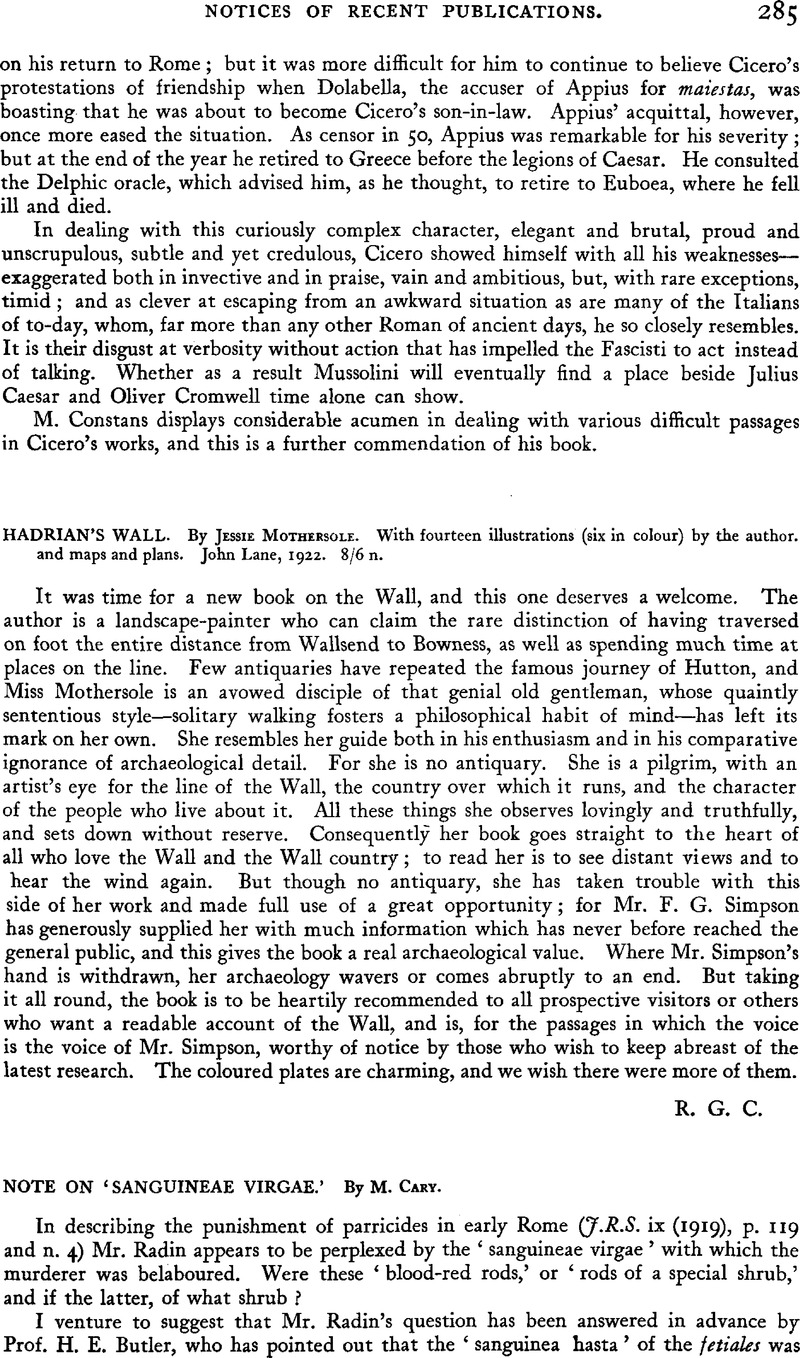Published online by Cambridge University Press: 24 September 2012

1 Classical Review, 1921, p. 157. Prof. Butler quotes the modern Italian name ‘sanguine’ for the cornel. Cf. also the French ‘cornouiller sanguin.’ The berry of the cornel is purple in colour; in autumn its leaves and shoots assume a vivid dark-red hue.
1 The rods were probably cut from the shrub commonly known as the ‘female cornel’ (Pliny's ‘sanguineus frutex’), the spear-shafts from a tree of the same family, the ‘male cornel.’
3 In the Middle Ages it was commonly used for making into arrows and mill-cogs. Cf. its German name, ‘Hartriegel.’
4 Annals, i, 23-4.